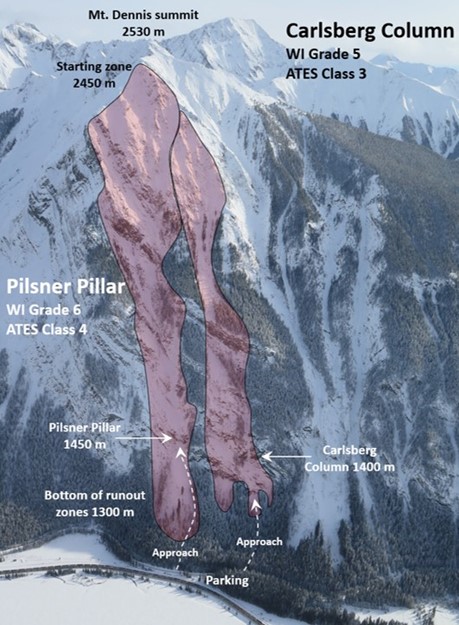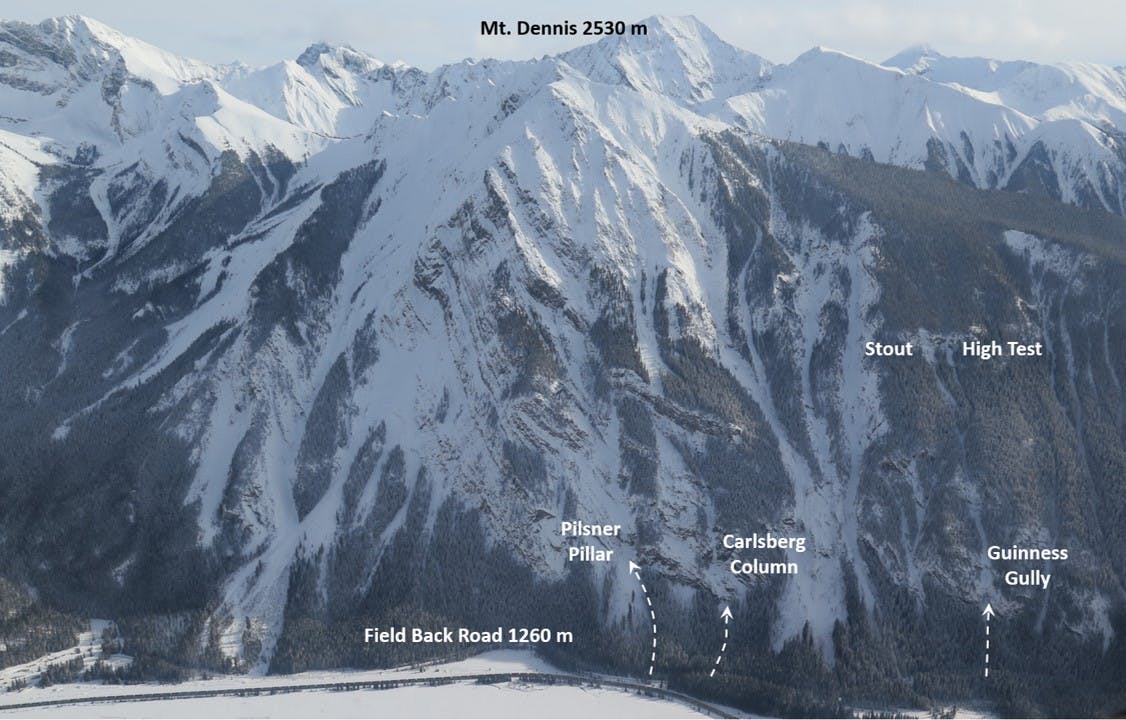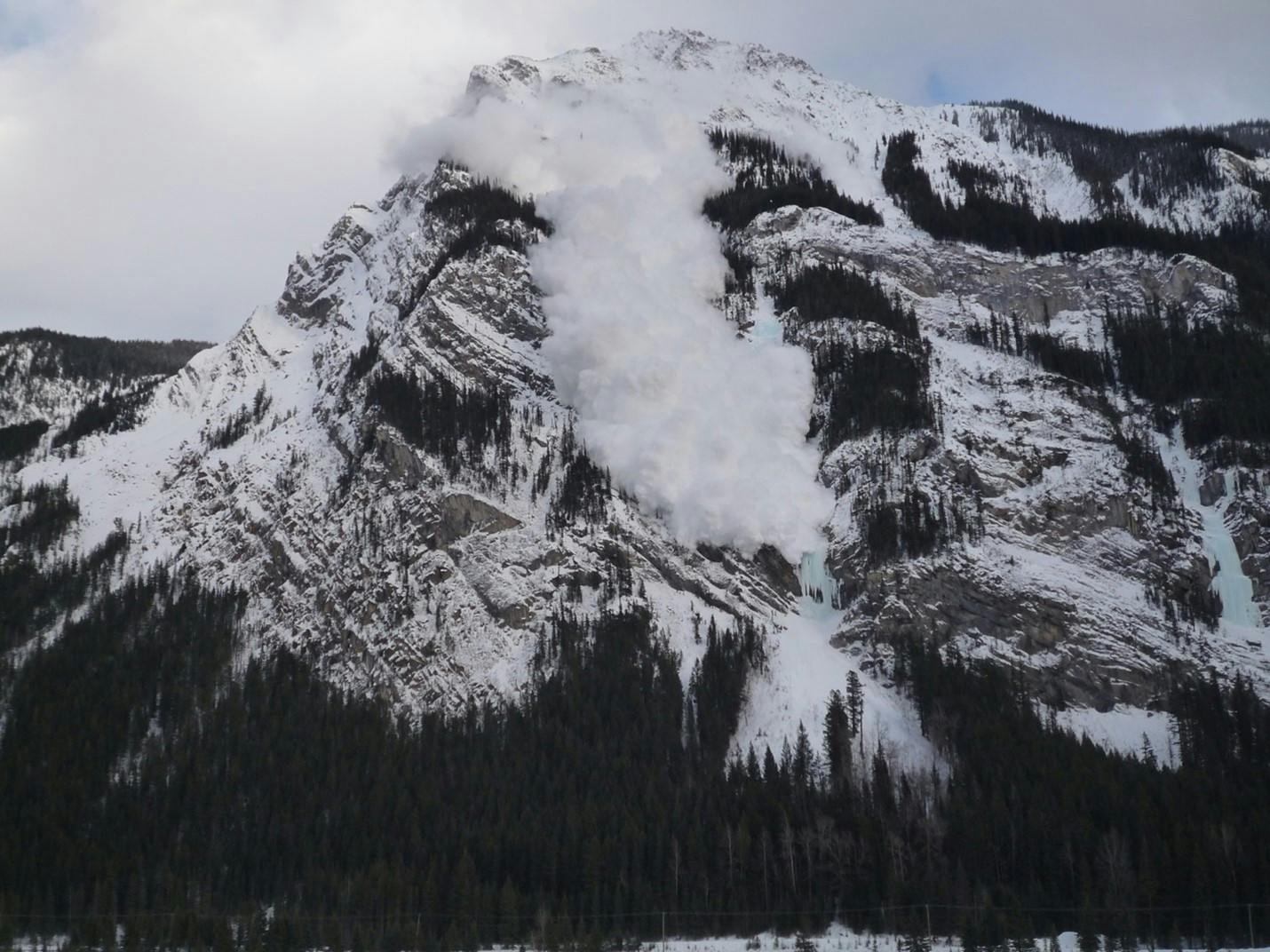
Pilsner Pillar is located on Mt Dennis and is the first beer climb that you come to as you drive the Field back road. Despite its length, the first 40 meters form the grade 6 pillar crux and people rarely climb the easier upper pitches. There are also several mixed lines that can be climbed as a first pitch. Pilsner Pillar is one of the avalanche gullies that gets controlled by Parks Canada to protect the road, but it can and does run naturally several times throughout the winter. It is one of the more likely avalanche paths to see natural activity in Field.
Avalanche Control on Mt. Dennis
The Field Back Road beneath Mt. Dennis is an Intermittent Avalanche Closure Zone. Parks Canada does avalanche control to protect the road and the CP Rail line and this means that the road and the climbs will be closed periodically throughout the winter for explosives avalanche control. It is illegal to breach these closures.
Parks Canada posts notifications of closures the day before in the headline of the avalanche forecast. The gates will be closed at both ends of the Field Back Road and signs will indicate the closure. This avalanche control is to protect the road and rail routes, it does not protect the ice climbs. There are many times when natural or human triggered avalanches could run over the climbs, but would not reach the transport routes meaning no avalanche control will be carried out.

Popularity
10 people completed the survey
- 90% climbed it 1-5 times
- 10% climbed it over 10 times
Avalanche Frequency
- 60% have seen debris on the approach to the climb
- 70% have seen debris at the base of the climbs
- 20% have seen debris above the top pitch
- 78% have witnessed avalanches

Time of Year and Day
The most frequently reported time for ascents and witnessing avalanches was February- April, followed by December to January, and least frequent was October to November.
- 67% of avalanches were witnessed between 6:00am-12:00pm27% of avalanches witnessed between 12:00-18:00pm
- 33% of avalanches were witnessed between 12:00-18:00pm
- 17% of avalanches were witnessed between 1:00am-6:00am
Avalanche Start Zones
- 50% believe the avalanche started well above the climb
- 13% believe the avalanche started right above the climb
- 38% were not sure where observed avalanches began
Notes on Avalanche Debris
- Many people reported seeing debris in the avalanche path under the climb and in the woods
- Deep debris was reported from full path avalanches
Reported Avalanches and Incidents
- Two size 2 avalanches were reported in the spring time with a traditional spring snowpack and no new snow. The avalanche danger was high in the alpine and it was -2 at the base
- Spindrift has been reported over the climb
- Solar triggered avalanches were reported on this climb
- This climb often produces avalanches as part of avalanche control
- Wet, heavy avalanches have also been witnessed on this climb
Contributing factors in order of significance
- 29% were believed to be caused by warming and solar radiation
- 43% were believed to be caused by new snow amounts
- 57% were believed to be caused by winds
Summary
Pilsner Pillar is in serious avalanche terrain. This climb has the greatest frequency of natural avalanches, and produces consistent large results from avalanche control of the 3 classic climbs on Mt Dennis. Many people just climb the first couple crux pitches, but these are in still in the ATES 4 terrain.